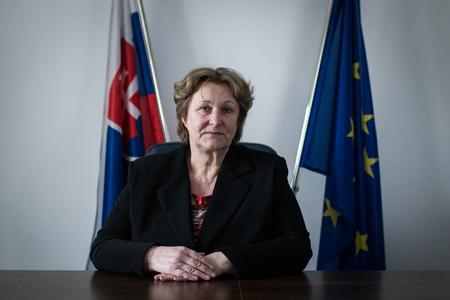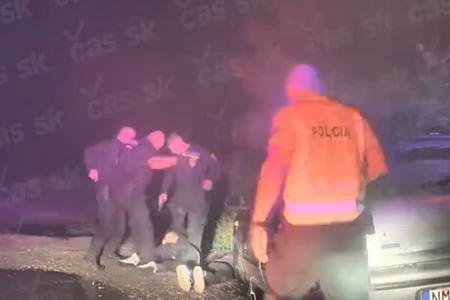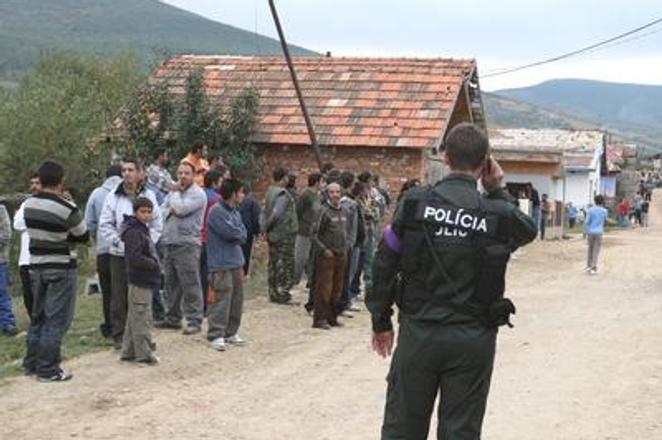In mid-April people from the Zborov village called police to solve a conflict between two brothers involving violence. At arrival, the pair of police officers saw around one hundred people arguing and, knowing that they could not resolve the clash by themselves, they called for help.
Another three patrols came and altogether eight police officers tried to make their way towards the two fighting men. Some individuals in crowd, however, tried to stop them.
“Their response was to enter with batons drawn, causing terror among the residents as they advanced through the streets, beating men, women and children in their path,” reads the report of the European Roma Rights Centre (ERRC) which published the recording of the police intervention. "A Roma resident who fled the violence said ‘if anyone tried to reason with them, when they appealed to them to stop - they were beaten’.”
Police President Tibor Gašpar stated that several of these interventions seem inappropriate and that he will launch am investigation into the event.
He admitted, though, that police still lack body cameras which could be attached to uniforms. As well, new recruits do not have psychological training and even those who operate on a daily basis near marginalized Roma settlements often have no psychological courses.
Besides cameras and training, police also need better equipment to prevent physical conflicts. Currently they can choose only between a soft baton or handgun, which easily leads to fights, according head of Police Unions Marián Magdoško who has experience intervening in Roma settlements.
“I know that police cannot buy everything at once but I’m trying to lobby for equipment which would prevent such cases,” Magdoško told The Slovak Spectator. “It’s 2017 and we should have adequate equipment.”

Destroying evidence
The police used batons also on people who were not resisting them, beating also children and pushing one elderly woman to the ground from behind. Ultimately three people required medical assistance: a 5-year-old boy, a man in his 40’s with a heart condition, and an elderly lady with disabilities, according to ERRC.
Gašpar later stated that one of injured persons was one of fighting brothers and his injuries are not related to police intervention.
Police did not only violate people’s rights during the action but allegedly behaved wrongly also after. Officers temporarily blocked an ambulance from entering the neighbourhood after it was called to treat the injured. Moreover witnesses who filmed the violence were visited by police officers later that evening and told to delete any footage they had of the events, according to ERRC.
The centre added that an informant who filmed the incident refused to be intimidated and would not delete the footage taken in a public area.
Gašpar did not comment on these accusations.
Opinions differ
While admitting that some of the force used was probably inappropriate, Gašpar also defended police officers pointing out that sometimes they just faked attacks with batons. Moreover this was not a planned action with a commander giving orders, setting sectors to cover etc.
“If this incident ended with death of one of those [fighting] persons we would deal with the question of why police officers did not come there on time,” Gašpar told the press.
Though the situation was complicated, police officers clearly managed it inappropriately, according to Government Proxy for the Roma Communities Ábel Ravasz.
“The video clearly shows that police interventions at the place were inadequate and were used against children and older people,” Ravasz told the press.
Interior Minister Robert Kaliňák stated that police brutality is not the most important part of the case.
“The determinative issue is why those police officers came there, why they were not with the person who was lying there injured or attending to some conflict,” Kaliňák told the press.
New ombudswoman Mária Patakyová did not comment the issue, stating that she needs to investigate it.

Still waiting for cameras
After several problematic police raids in Roma settlements Kaliňák and Gašpar stated that police patrols will have body cameras. Police should have around 7,000 cameras together with a system archiving data which will cost between €16-20 million.
Cameras would be a great improvement in protecting police from false accusations and citizens from police brutality. Moreover, it is proven that people behave better in front of cameras, according to Magdoško.
Though the promise was given in 2013, the Interior Ministry has not even launched a public procurement for them.
Kaliňák has been claiming that police need to test devices during all weather conditions, however the testing began in early 2015.
The Interior Ministry is now trying to negotiate the possibility that the whole purchase will be covered from EU funds, according to Gašpar.
“I know that many were expecting that we will just enter the store and buy cameras for police officers,” Gašpar told the press, “but this is not the way how these things work.”
Training and equipment
In early 2017 the Interior Ministry published a list of 200 areas which are allegedly problematic due to marginalized Roma communities on which the ministry wants to focus. Despite that, Gašpar admitted that police officers working there do not automatically have special psychological training.
In March, Gašpar stated that he wants psychological training for police officers after the Nový Čas tabloid daily published a video in which a young female driver was shot at and kicked while lying on the ground after speeding away from police and refusing to stop.
The investigation of the case is still ongoing.

To avoid physical encounters, police should also have a bigger and better arsenal of tools. A standard police officer has a handgun, a rubber baton which is too soft for blocking attacks, and old-fashioned pepper spray which is ineffective on windy, days, according Magdoško.
He suggested police equip officers with hard-material batons, modern pepper spray and stun guns.
“Just the action of a police officer drawing a stun gun makes aggressive people back off,” Magdoško said. “If a person isn’t under the influence of drugs, the conflict probably wouldn't ensue in physical contact as is in case of batons.”



 (source: Sme)
(source: Sme)